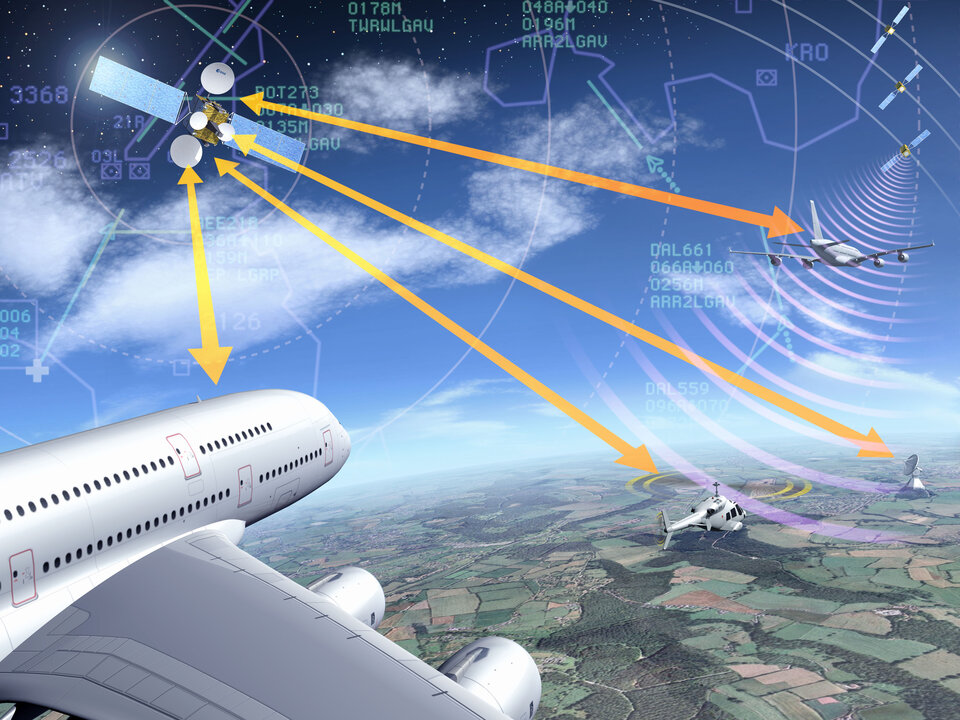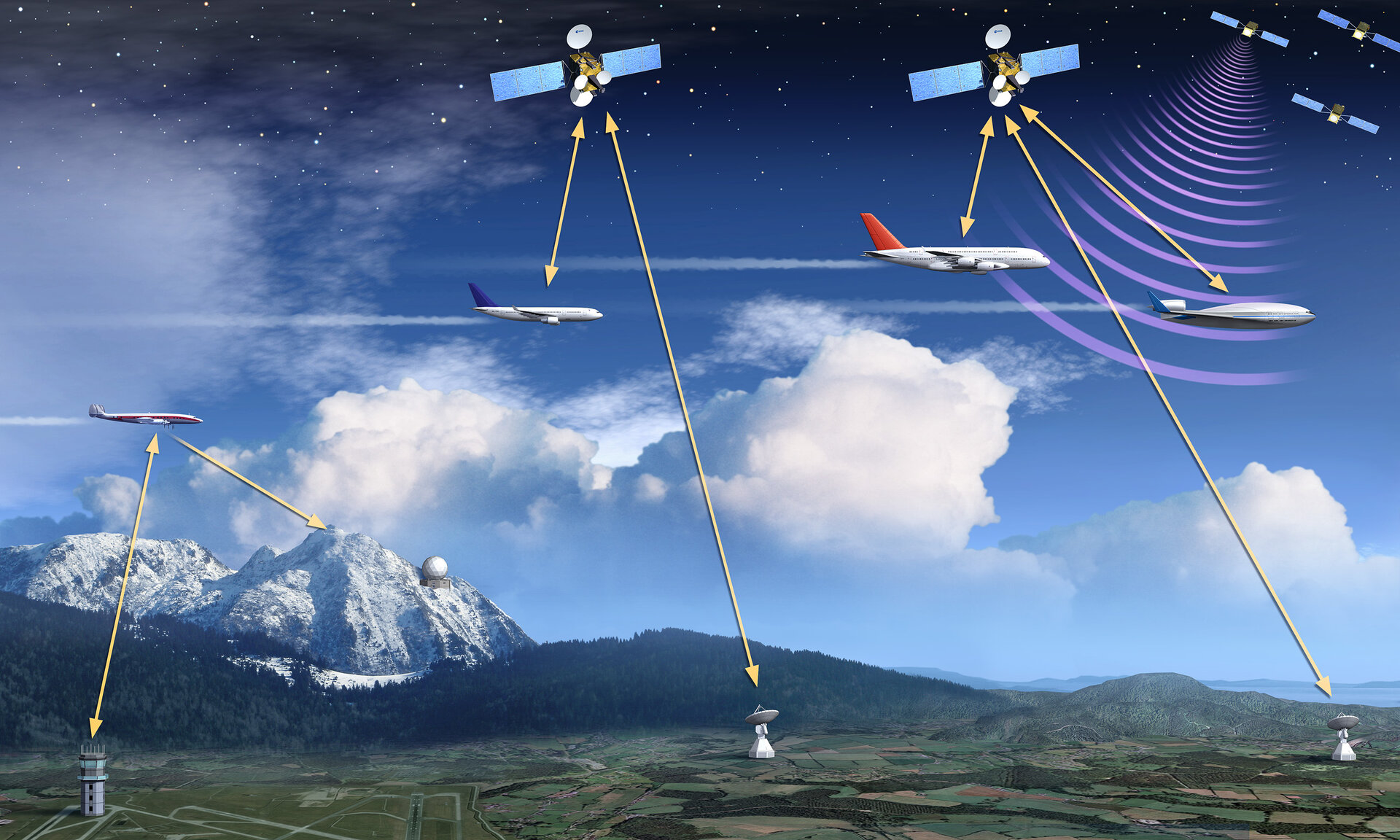ESA launches new programme for air traffic management via satellite
Pilots and flight controllers will benefit from exchanging data and communicating via satellite and terrestrial systems in the future Single European Sky. This is the aim of ESA’s new programme, Iris, set in motion this week by ESA Member States.
The Single European Sky legislation launched by the European Commission in March 2004 has set the political frame for actions in Europe to unlock viable growth in air transport.
To support this, the Single European Sky Air traffic management Research (SESAR) programme is the ‘operational’ part, proposing a new approach to reform the air traffic management structure in Europe. It addresses administrative, operational and technical concepts for communication, navigation and surveillance for air traffic safety. Within this wide scope, it provides an opportunity for the satellite industry to demonstrate the efficiency and potential of satellite communications for safety-of-life communications.
While satellite communications have been used on aircraft for many years, so far they have mostly addressed non-safety-critical communications, such as passenger telephone calls and internet connectivity. ESA, with the support of the European space industry, Eurocontrol, air navigation service providers, and national space agencies, is preparing to carry out all the necessary work for satellite communications to be considered under the SESAR programme.
Together with the European Union, these organisations have worked towards implementing a new air traffic management concept. By 2020 global air travel is expected to double, resulting in increasing congestion on the ground and in the air, resulting in a requirement for a new, independent air-to-ground link for aircraft communications. All levels of civil aviation authorities, including Eurocontrol, the agency responsible for European airspace, recognise the need to complement the current systems with added capacity.
Satellite answers the challenge
The European Commission has already set targets for such a system. To reduce delays, and to take into account future demand, the system must be able to handle a three-fold increase in capacity. Safety, too, must be improved by a factor of ten while reducing the burden on the environment by at least 10 percent. The final EC requirement is that air traffic management services be 50 percent less expensive than current systems.

Satellite is an ideal solution for reaching these targets. Satellites can not only deploy additional capacity over vast areas rapidly but also tailor it to regional requirements. By interacting seamlessly between continental, oceanic and polar routes, satellites offer a unique opportunity for safety improvements and the provision of additional services to crews. This is especially important as air traffic communications are currently not seamless, even over the Mediterranean Sea. Furthermore, oceanic routes are still served by the High Frequency (HF) band. The data limitations associated with HF radio communications allow only the most basic forms of communication between pilot and ground. Added to these problems, various countries currently operate different systems, placing another burden on aircraft systems.
A satellite system would provide a much more homogenous solution and could act as a complement to a terrestrial network or, instead, as the primary system in some areas. When coupled with navigation systems like Galileo, satellite communications can even contribute to optimising aircraft trajectories. Future aircraft avionics could be integrated and standardised, improving on safety while at the same time reducing costs.
Iris: Linking the sky to the Earth

Making this a reality will require a new programme line in ESA's Telecommunications Department. ESA Telecom uses the ARTES (Advanced Research in Telecommunications Systems) programme to offer support to European industry in developing ideas for the market and citizenry. The new element for air traffic management via satellite will be ARTES 10. It will be named Iris, after the Greek mythological personification of the rainbow and messenger of the gods, responsible for linking the sky with the Earth. The Iris programme will be divided into three phases.
The first phase will lead up to the 2008 ESA Council meeting at ministerial level, and contribute to early development of the required satellite system and the new communication system in line with pre-agreed planning. The second phase, if approved by the ministers in 2008, will start in mid-2009 and include the system development.
Phase three is planned to start in 2012 and, if approved by the Council at ministerial level in 2011, will support in-orbit verification and certification of the pre-operational system, technical support to deployment of the full system, and preliminary work leading to an enhanced future role for satellites.




